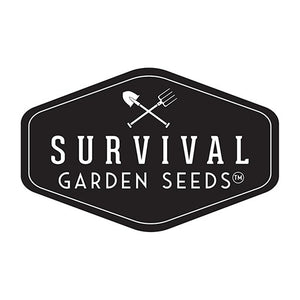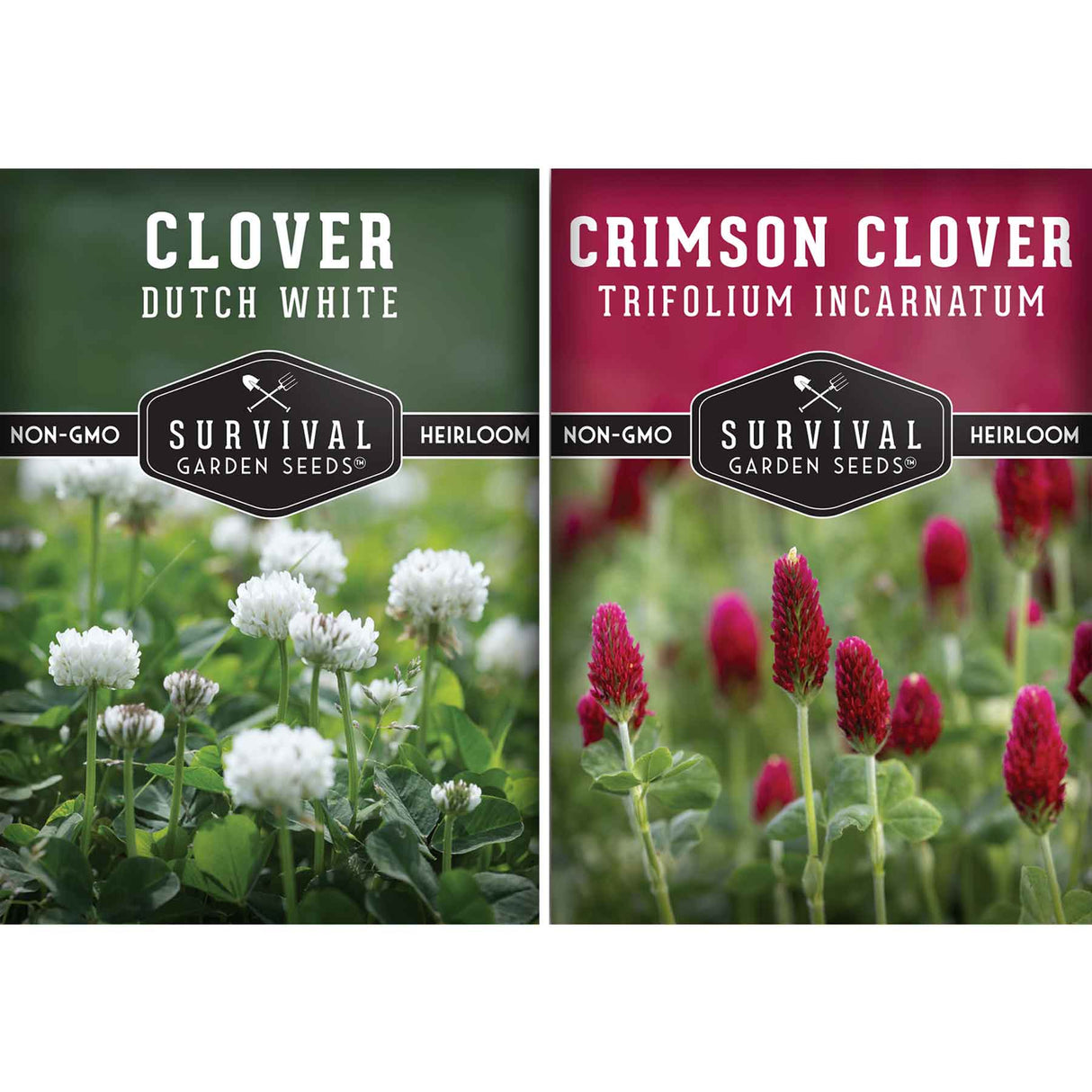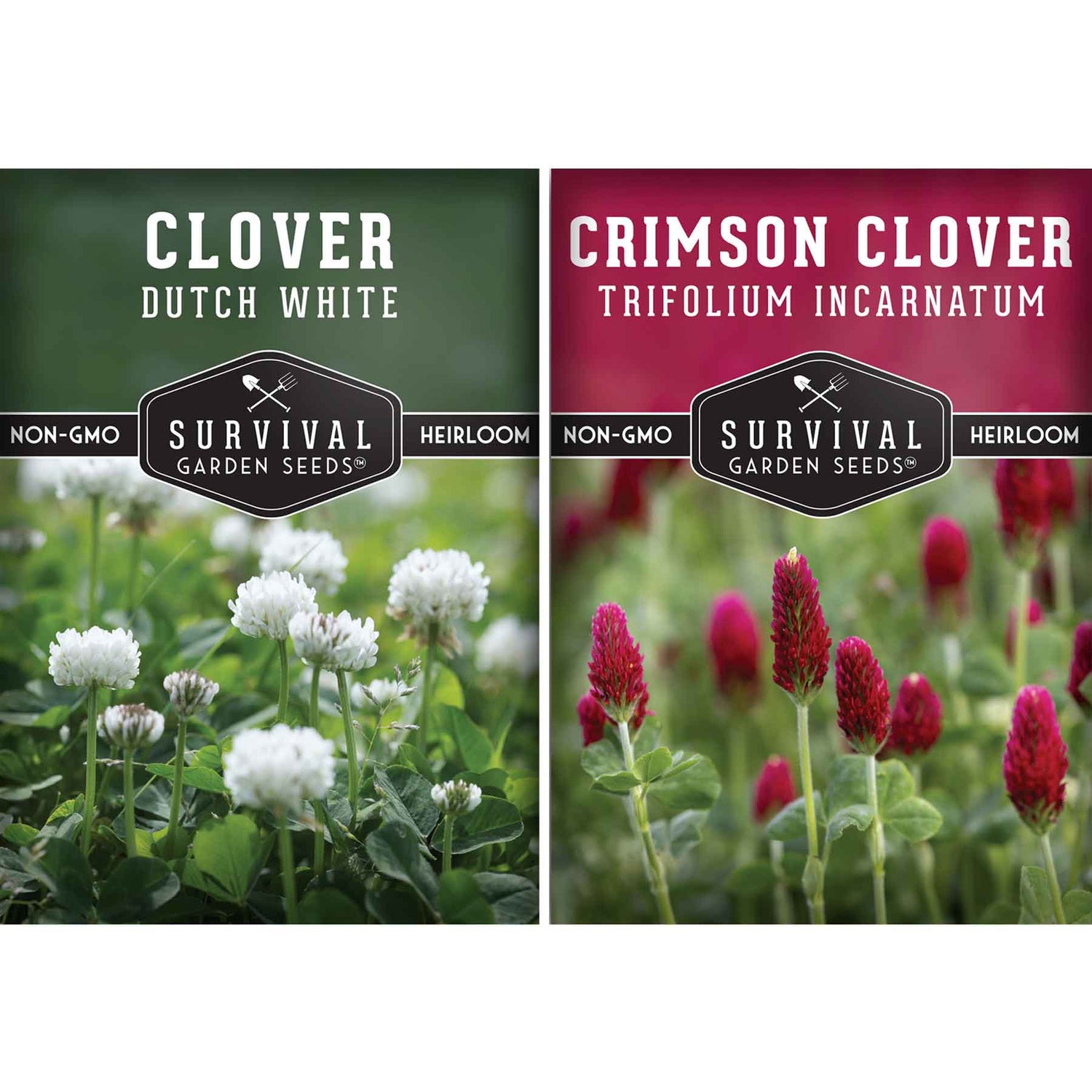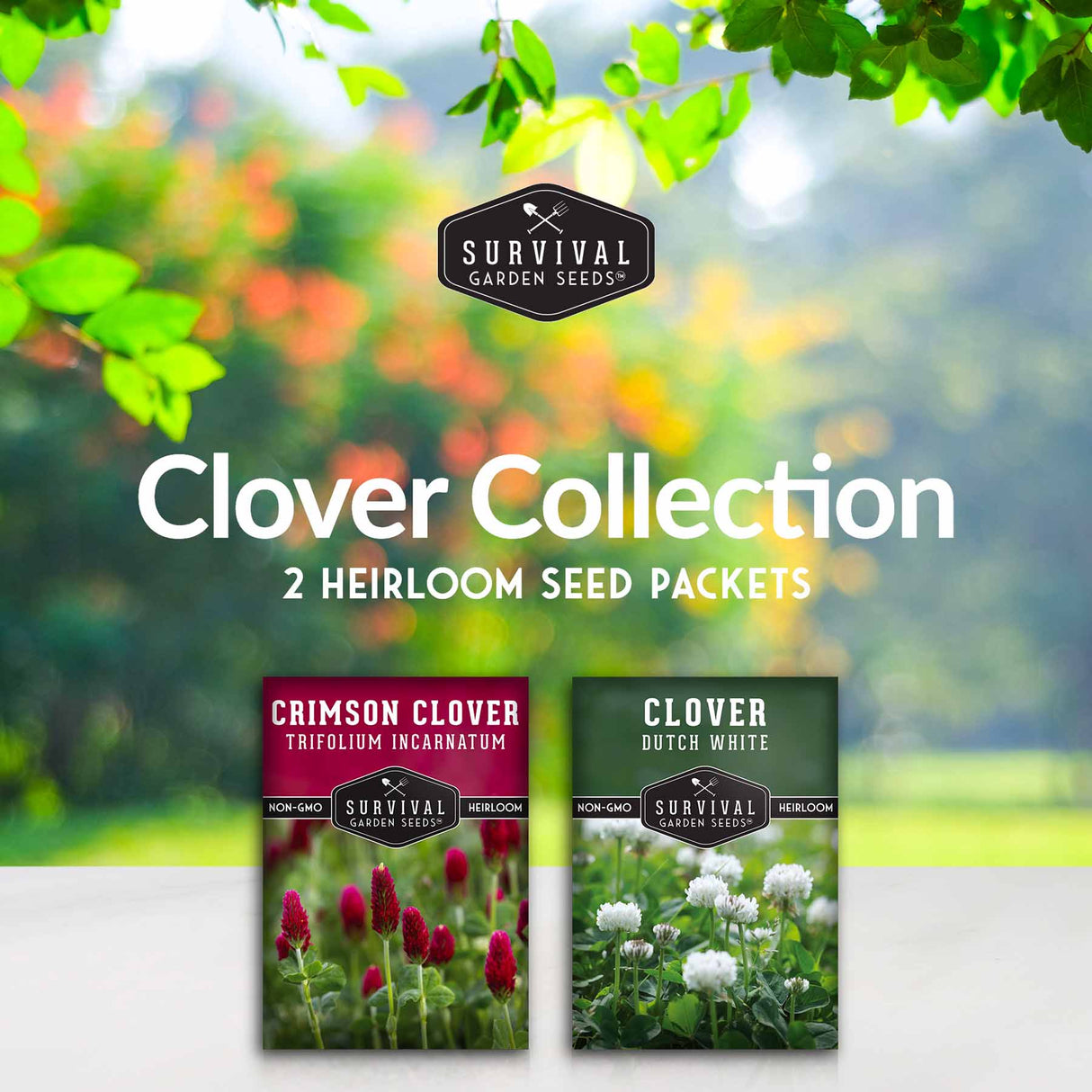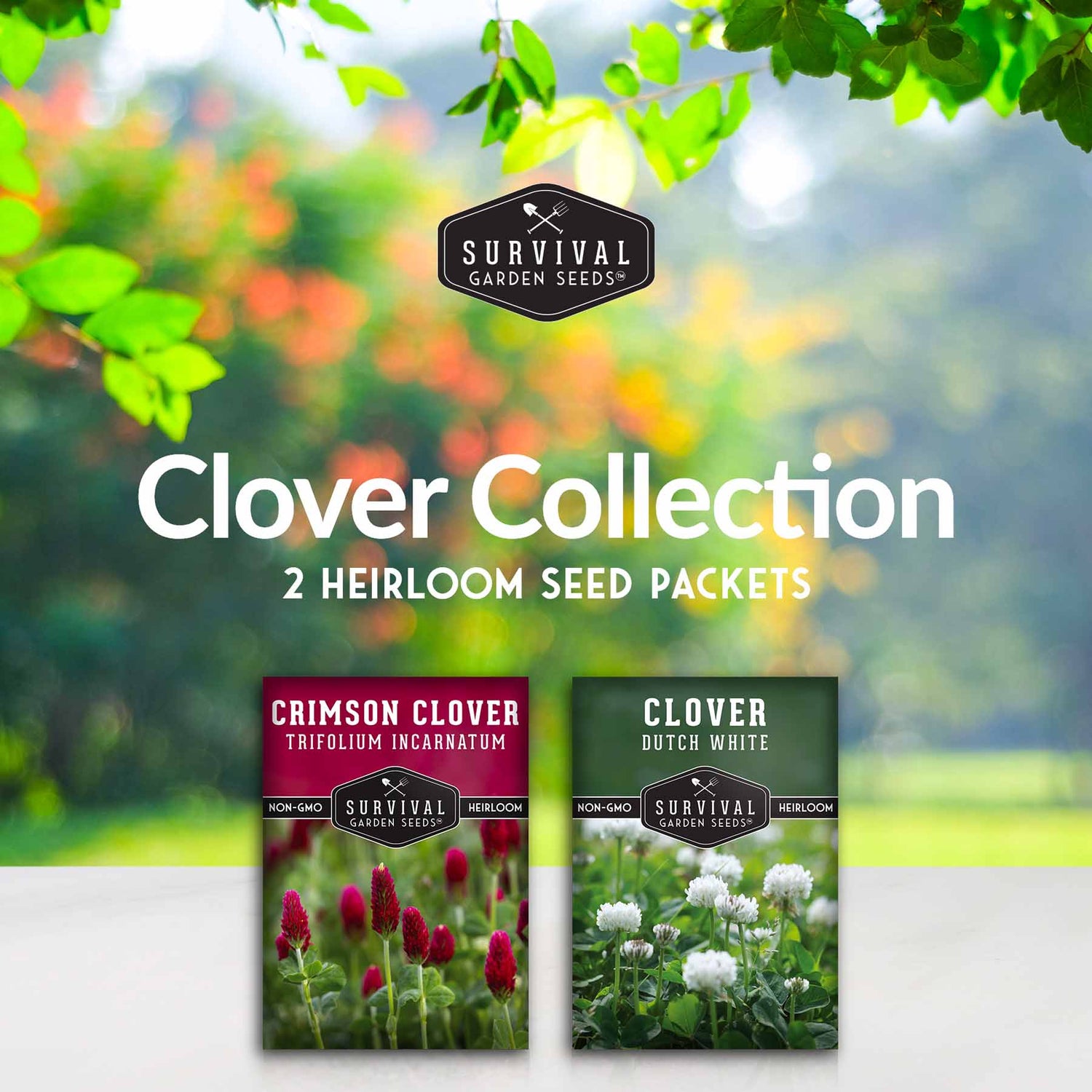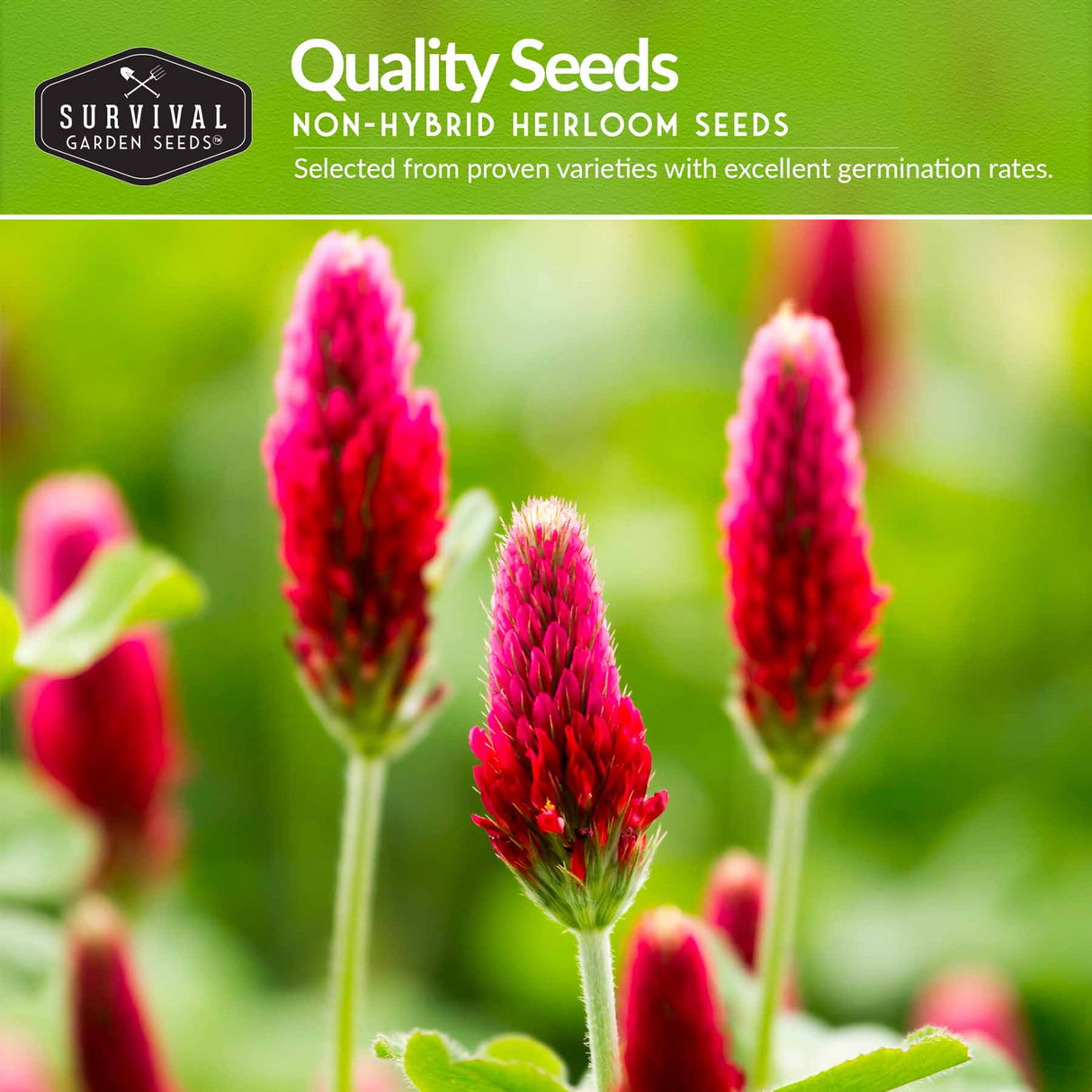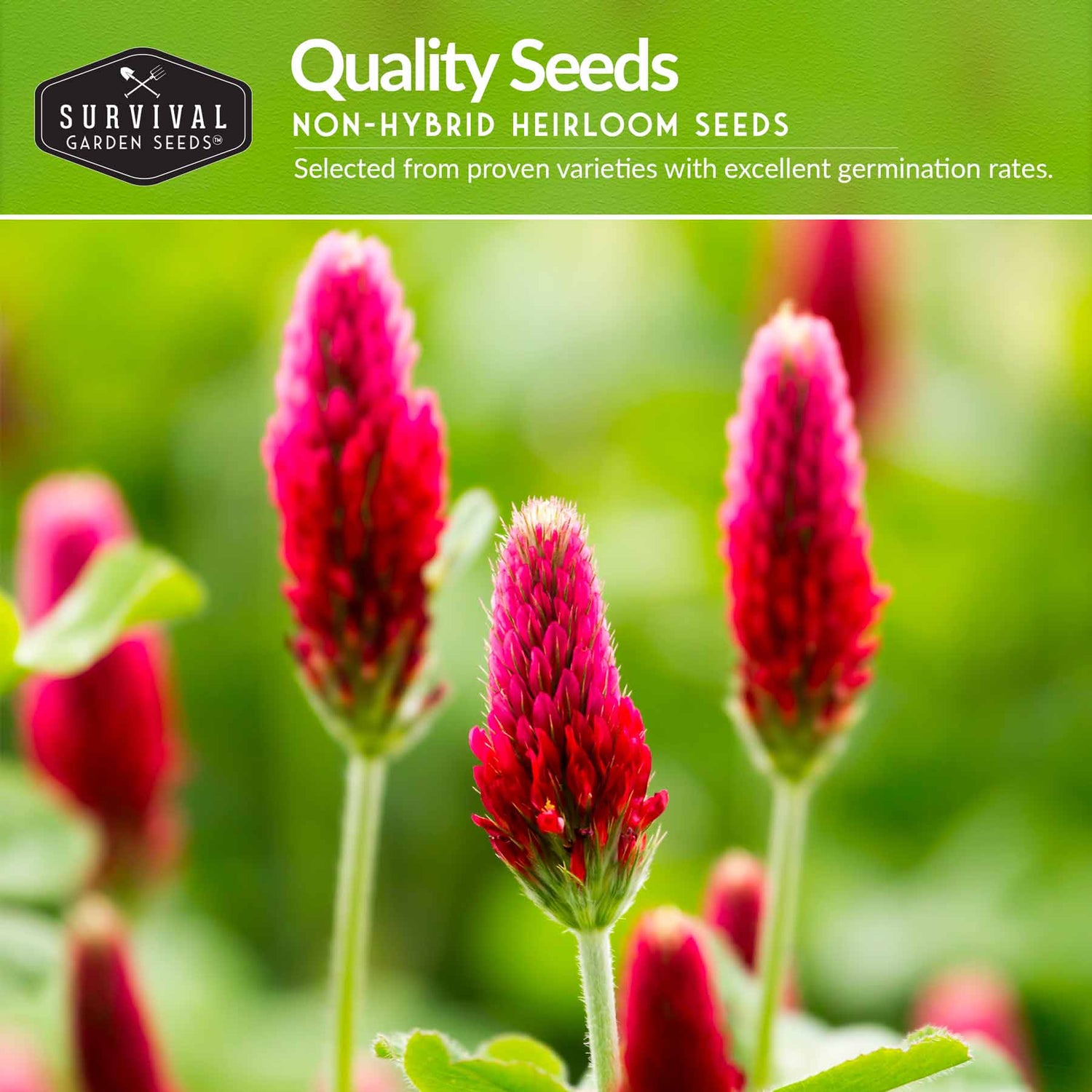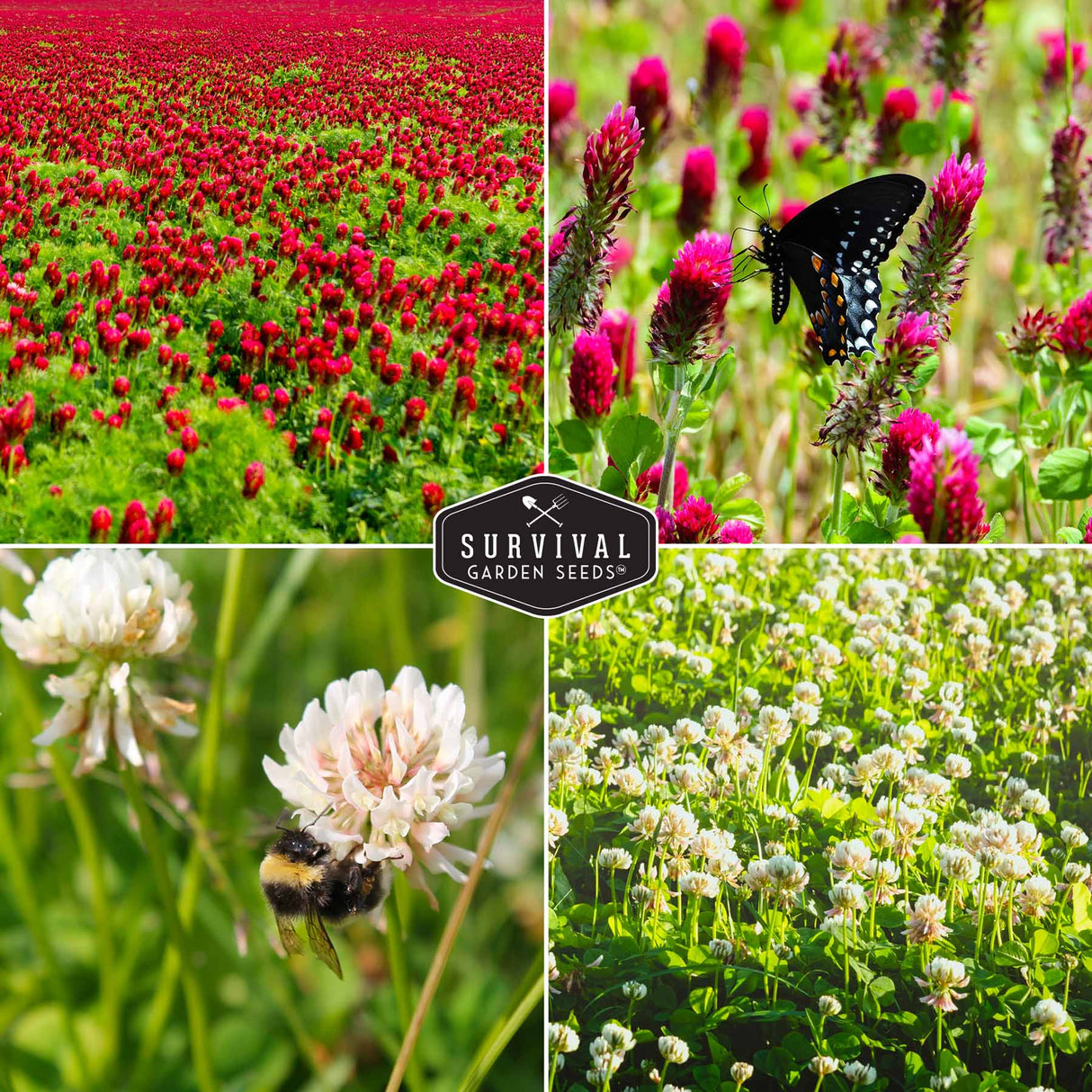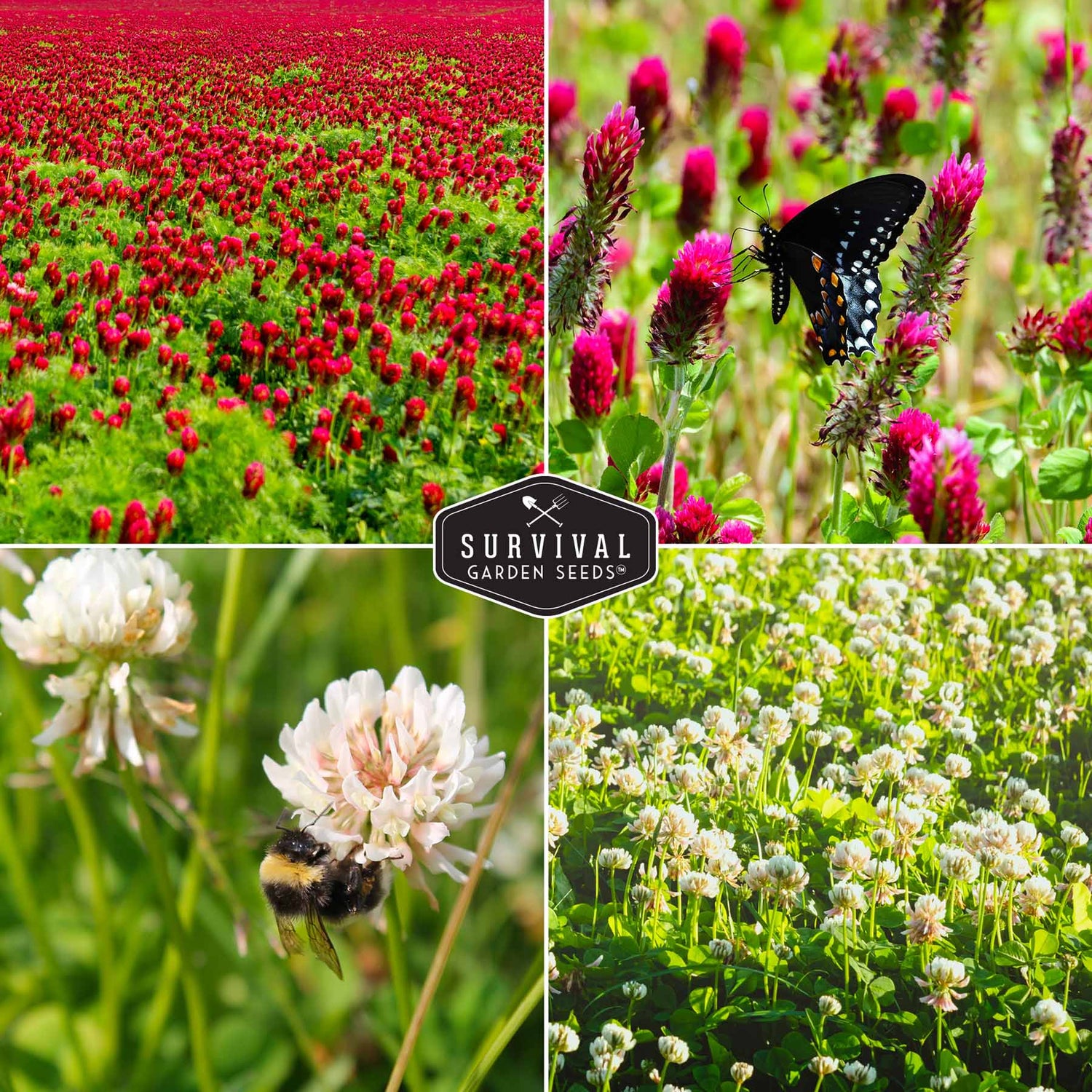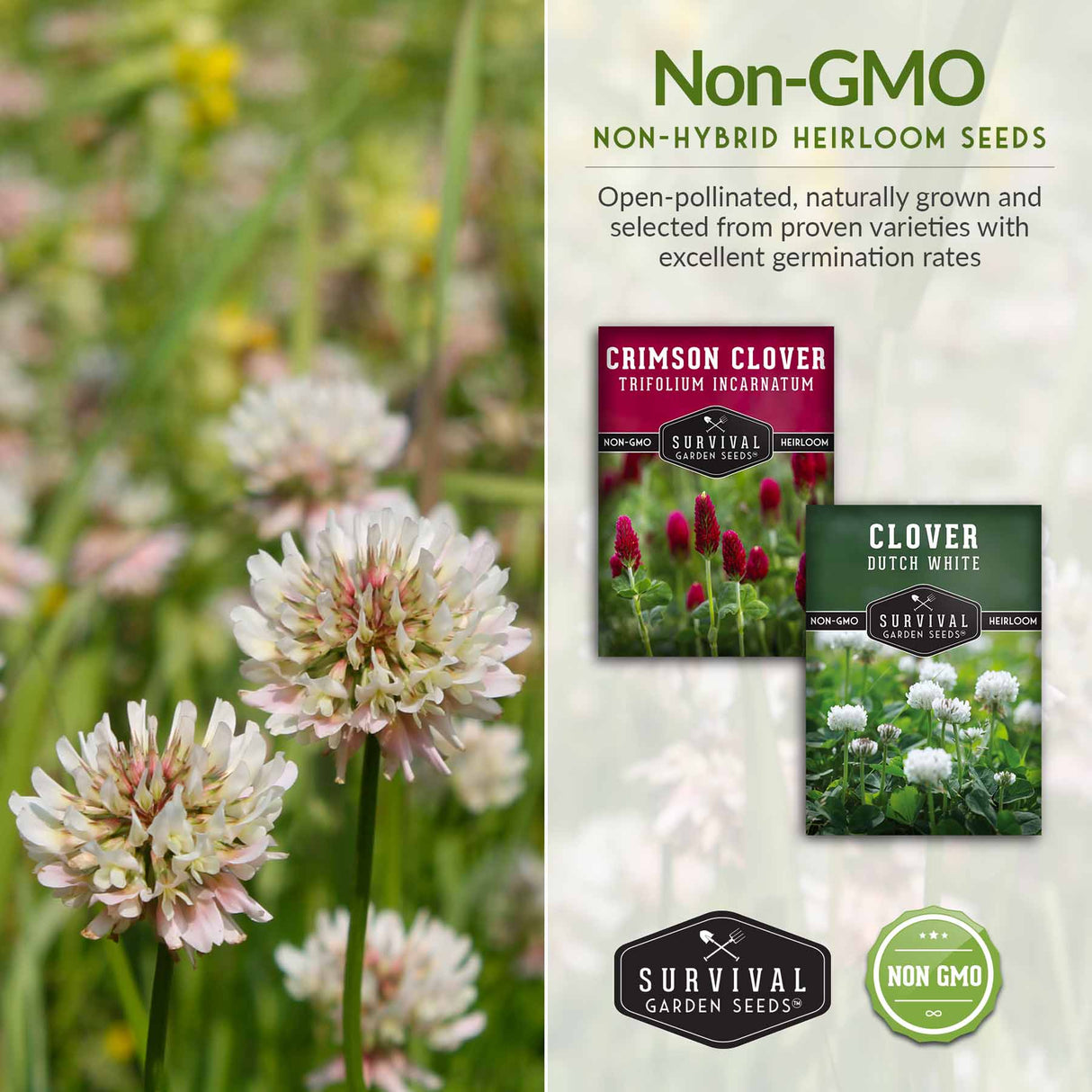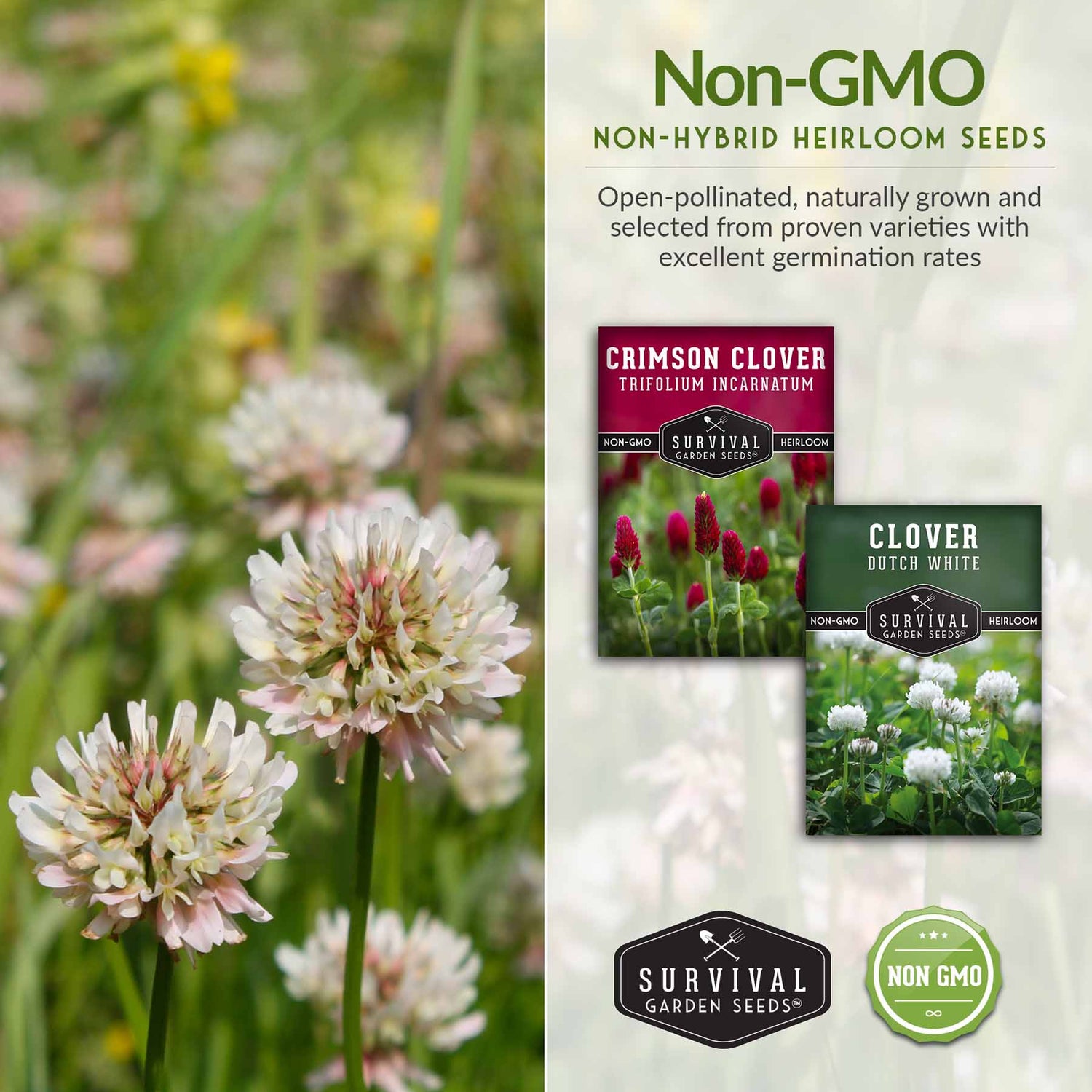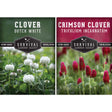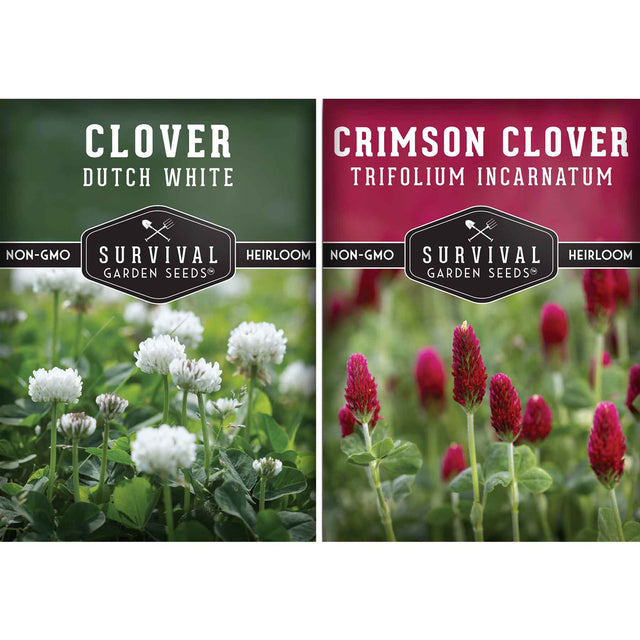Clover Seed Collection - Crimson & Dutch Clover
Clover Seed Collection - Crimson & Dutch Clover is backordered and will ship as soon as it is back in stock.
Couldn't load pickup availability
2 full sun annual clover flowers for planting in the garden.
Dutch White Clover is an excellent ground cover that can withstand almost anything - poor soil, wet conditions, moderate drought, shade, and even heavy traffic. Carpet your raised beds with this legume to improve the soil and control erosion.
Crimson Clover, not to be confused with Red Clover, is a lovely annual clover that produces large, elongated flowers that look lovely planted in mass or paired with other flowers. This nitrogen fixer grows quickly, but will not take over the garden. The flowers may be dried to make a refreshing tea. Scientific name Trifolium incarnatum.
- Dutch White Clover - This environmentally friendly ground cover fixes nitrogen into the soil. It can be grown as a cover crop or mixed into grass to improve lawn soil quality. It can be planted as forage for wildlife or to attract bee and other pollinator species. The flower is edible and makes a lovely tea.
- Crimson Clover - A quick-establishing legume, crimson clover is also a great addition garden to fix nitrogen and help with soil erosion. It is popular as silage, forage, and provides food for pollinators and wildlife. The colorful blooms are beautiful for mass planting.
Heirloom Garden Seeds
All of our seeds are open-pollinated, non-GMO, heirloom varieties with tested germination rates
Payment & Security
Payment methods
Your payment information is processed securely. We do not store credit card details nor have access to your credit card information.
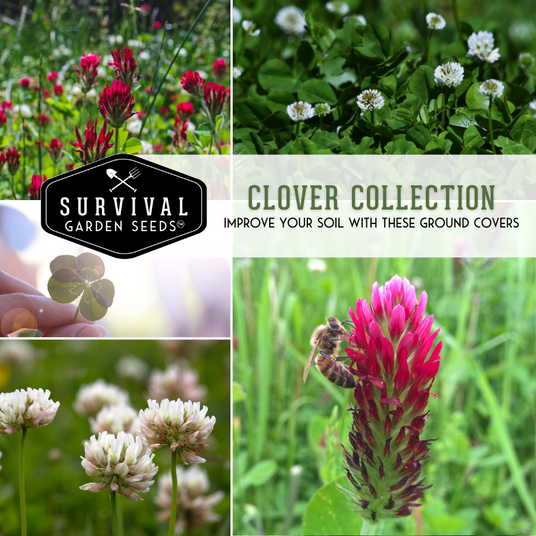
Useful Clover
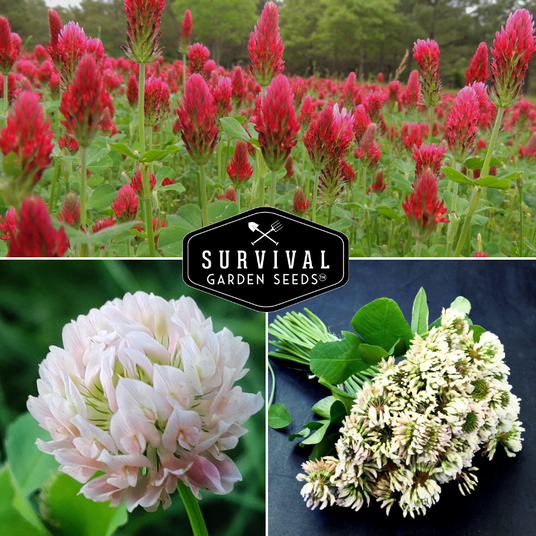
Benefits of Clover
Why Choose Survival Garden Seeds
At Survival Garden Seeds, we believe in preparing today for tomorrow’s peace of mind. That’s why we offer only heirloom, non-GMO, and untreated seeds you can trust to nourish your family and support a sustainable lifestyle. As a family-owned American company, we’re committed to providing seeds that grow strong and true—helping you cultivate health, resilience, and beauty in your garden.
Frequently Asked Questions
What are heirloom seeds?
What are heirloom seeds?
Heirloom seeds are the types of seeds your grandparents grew. These varieties have been passed down from generation to generation. They’re old reliable open-pollinated varieties that aren’t typically grown commercially. Instead, they have a rich history that predates modern breeding techniques.
You can learn more about open-pollinated, heirloom, and non-GMO seeds in our Survival Garden Training blog.
Where are Survival Garden Seeds sourced?
Where are Survival Garden Seeds sourced?
The majority of our seeds are sourced in the United States, with a few exceptions when the seed is difficult to source domestically. Whenever we do have to source outside of the US, we ensure our seeds are safe to grow, non-GMO varieties that meet our standards for germination and reliability.
Are your seeds treated?
Are your seeds treated?
No, we do not pre-treat our farmer seeds. All of our garden seeds for sale are untreated, open-pollinated, non-GMO, and heirloom varieties. They are kept in temperature-controlled cooler storage until they are packed and shipped to keep them pest and disease-free.
In what zones can I grow your seeds?
In what zones can I grow your seeds?
The seeds in our collections are specifically chosen from varieties that can be successfully grown from Zone 3 to Zone 10 USDA Hardiness Zones. However, individual varieties have specific needs to thrive in different environments. Each seed pack has optimal temperatures for germination and instructions on seed starting. Consult local frost dates to plan your garden and get the most out of your seeds.
What is the shelf life of these gardening seeds?
What is the shelf life of these gardening seeds?
Our seeds will generally last for 3-10 years if they are appropriately stored in a cool, dry place. However, we encourage you to grow your survival seeds within a year or two of purchase. This yields the best germination rates possible and also gives you more experience growing survival food now. At the end of the growing season, follow the instructions on the back of each packet for saving seeds for future gardens. These new seeds for survival will be more adapted to thrive in the growing conditions where you are.
